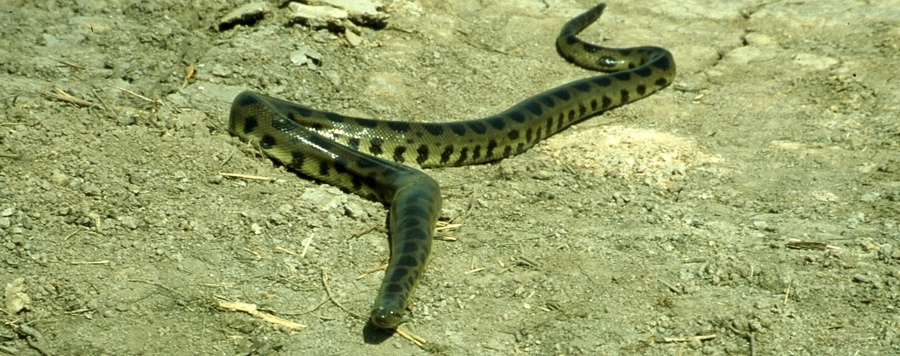
Morphological trends and genetic divergence in anacondas, genus Eunectes Wagler, 1830 (Serpentes: Boidae)
The genus Eunectes Wagler, 1830 is divided into four nominal species: E. murinus (Linnaeus, 1758), E. notaeus Cope, 1862, E. deschauenseei Dunn and Conant, 1936, and E. beniensis Dirksen, 2002 (E. barbouri Dunn and Conant, 1936 being a synonym of E. murinus). We analyze multivariate morphological traits (scalation, coloration pattern, and body shape), sequences of one mitochondrial and five nuclear genes, and genetic patterns of randomly amplified DNA (RAPD) markers of historical geographical samples representing all known taxa. We show that the genus consists of two distinct evolutionary lineages, ‘big-bodied’ (only E. murinus) and ‘small-bodied’ anacondas. The latter group includes three morphologically distinct allopatric forms, E. notaeus, E. deschauenseei, and E. beniensis. Both phenotypically and genotypically, E. beniensis is more distant from E. notaeus and E. deschauenseei than the two latter species are from each other. However, the three nominal species of small-bodied anacondas did not show clear reciprocal monophyly and did not reach the stage of complete lineage sorting. Instead, genetic data support the presence of three incipient species of small-bodied anacondas.






